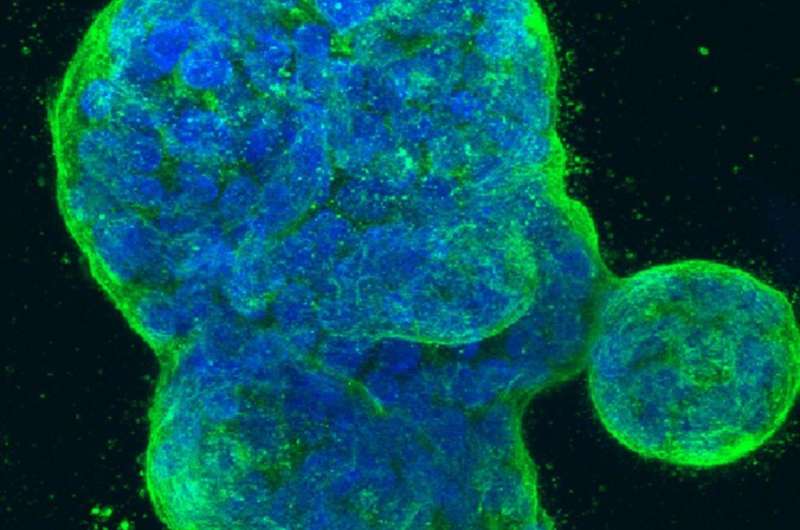This article has been reviewed according to Science X's editorial process and policies. Editors have highlighted the following attributes while ensuring the content's credibility:
fact-checked
peer-reviewed publication
proofread
Aggressive luminal breast cancer: Are cis-spliced fusion proteins pathological?

A new editorial paper titled "Are cis-spliced fusion proteins pathological in more aggressive luminal breast cancer?" has been published in Oncotarget.
A vast majority of breast cancers (~70%) are estrogen receptor-alpha positive (ER+), for which endocrine therapy is the common treatment. However, recurrence often occurs leading to tumor progression, metastasis and eventually patient death, and the underlying molecular mechanisms remain poorly understood. In this new editorial, researchers Chia-Chia Liu and Xiao-Song Wang from the University of Pittsburgh discuss their recent study regarding recurrent gene fusions—hallmarks of some cancers that resulted either from chromosomal rearrangements or from cis- or trans-splicing.
"Importantly, selected oncogenic fusions have been matched with effective targeted therapy in several solid tumors. For instance, EML4-ALK, one of the most important oncogenic driver genes of non-small cell lung cancer (NSCLC) uncovered in recent years," the researchers write.
In addition to gene fusions resulting from genomic rearrangements, a read-through SLC45A3-ELK4 fusion transcript associated with disease progression and metastasis has been identified in prostate cancer. Although the whole genome and RNA sequencing provide an effective way to detect fusion genes, the downstream identification and validation of fusion genes or their products in solid tumors remains a major challenge.
Through analysis of RNA-seq data from TCGA, the authors of this editorial and their co-authors recently identified a neoplastic fusion transcript RAD51AP1-DYRK4 in luminal B breast cancer (~17.5%) showing higher ki67 expression, which is an indication of aggressive clinical characteristics.
"In this study, we examined the utility of MEK inhibitor trametinib (Mekinist) currently used for treating melanoma with BRAF mutations, in blocking the MEK-ERK signaling driven by RAD51AP1-DYRK4 fusion. Interestingly [...] RAD51AP1-DYRK4 may endow sensitivity to MEK inhibition in luminal B breast cancer. To our knowledge, this is one of the few non-traditional fusions generated by read-through events in the absence of DNA rearrangement that play an important role in tumorigenesis," the researchers explain.
More information: Chia-Chia Liu et al, Are cis-spliced fusion proteins pathological in more aggressive luminal breast cancer?, Oncotarget (2023). DOI: 10.18632/oncotarget.28438


















